You are here
Wwii 7th Army Operation Husky Sicily Invasion Combat Map Messina 1943 Dated
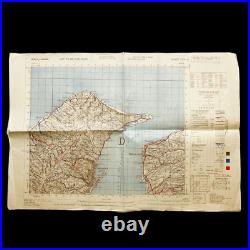
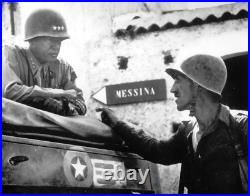
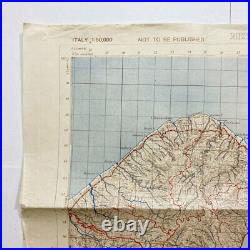
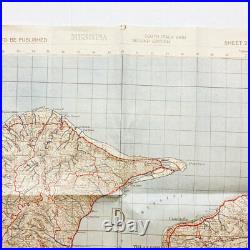
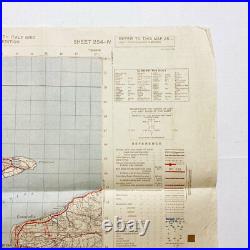
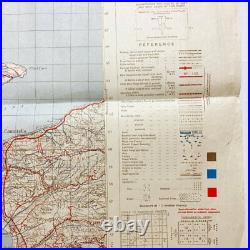
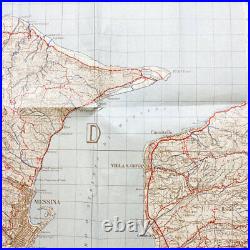

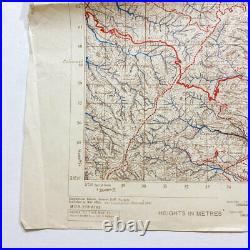
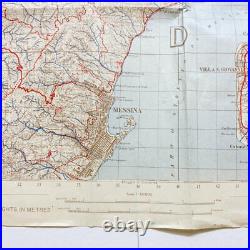

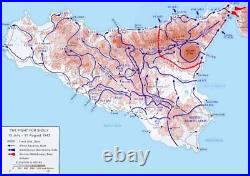


Size: 25.5 x 17.5 inches. This Operation Husky map titled "Messina" Italy was published by the war office on 1941, with the second edition (colored) published in 1943. This combat map was carried by an infantry soldier serving 7th Army that that led members of his squad after their beach head landing in southern Sicily on July 10, 1943. After succeeding in North Africa, Patton, now promoted to the rank of Lieutenant General, became commander of the newly formed Seventh Army, which was formed at midnight on 10 July 1943 by the re-designation of the I Armored Corps.
The Allied invasion of Sicily in July 1943, was conducted in conjunction with the British Eighth Army, commanded by General Sir Bernard Montgomery, Patton's rival. Patton commanded the Seventh Army until early 1944. The Seventh Army landed on several beaches in southern Sicily on 10 July 1943 and captured the Sicilian capital of Palermo on 22 July and, along with the British Eighth Army, captured Messina on 16 August. During the fighting, the elements of the Seventh Army killed or captured thousands of enemy soldiers, mainly Italians.
During the operation the Seventh and Eighth Armies came under the command of the 15th Army Group, under General Sir Harold Alexander. The headquarters of the Seventh Army remained relatively inactive at Palermo, Sicily, and Algiers until January 1944, when Lieutenant General Mark W. Clark, then commanding the U. Fifth Army on the Italian Front, was assigned as commander and the Seventh Army began planning for the invasion of southern France.
On 15 August 1944, elements of the Seventh Army assaulted the beaches of southern France in the St. Patch was promoted to Lieutenant General three days later. On 15 September, the Seventh was put under the field control of the 6th Army Group, under Lieutenant General Jacob L. The 6th Army Group also included the French First Army. Within one month, the Seventh Army, which by then employed three American divisions, five French divisions and the 1st Airborne Task Force, had advanced 400 miles and joined with the Allied forces coming south from Normandy. In the process, the Seventh Army had liberated Marseilles, Lyon, Toulon and all of Southern France. The Seventh Army then assaulted the German forces in the Vosges Mountains and broke into the Alsatian Plain. During the Battle of the Bulge in late December, it extended its flanks to take over much of the area that had been the responsibility of U. Third Army, then commanded by Patton who had previously commanded the Seventh, which allowed the Third to relieve surrounded American forces besieged at Bastogne. In mid-January 1945, the Seventh engaged in pitched battle seeking to regain ground lost to Germany's Operation Nordwind New Year's offensive. Along with the French First Army, the Seventh went on the offensive in February 1945 and eliminated the Colmar Pocket. After capturing the city of Strasbourg, the Seventh went into the Saar, assaulted the Siegfried Line, and reached the River Rhine during the first week of March, 1945. In a lead role in Operation Undertone, the Seventh Army fought its way across the Rhine into Germany, captured Nuremberg and then Munich. Finally it crossed the Brenner Pass and made contact with Lieutenant General Lucian Truscott's U. Fifth Army at Vipiteno - once again on Italian soil.
In less than nine months of continuous fighting, the Seventh Army had advanced over 1,000 miles and for varying times had commanded 24 U. And Allied divisions, including the 3rd, 36th, 42nd, 44th, 45th, 63rd, 70th, 100th, and 103rd Infantry Divisions.

